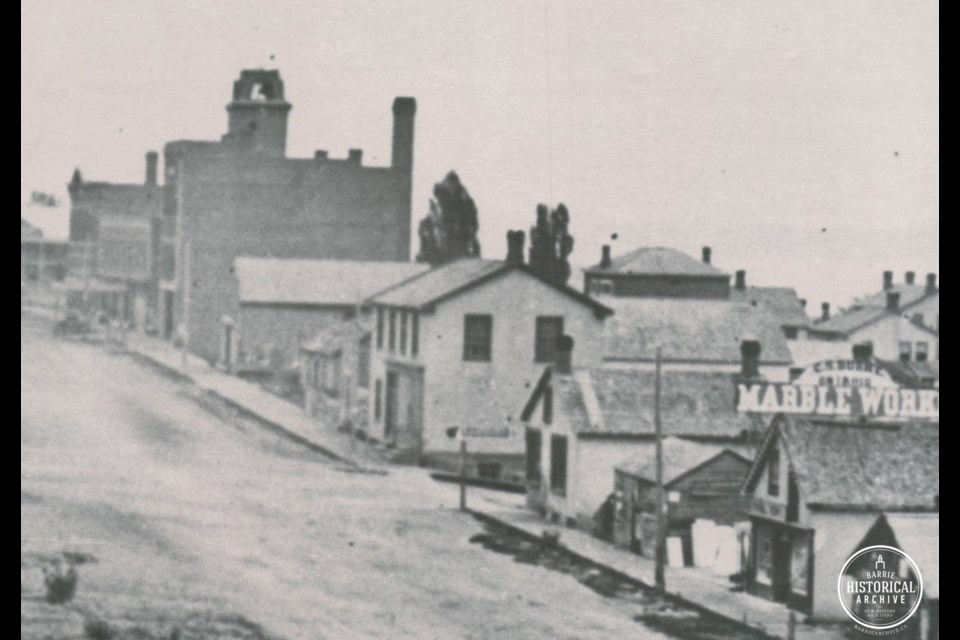This ongoing series from Barrie Historical Archive curator Deb Exel shows old photos from the collection and one from the present day.
Barrie Milling Company – 65 Collier St.
In 1883, lumberman Thomas Cundle bought the Parker Grist Mill, a three-storey building just west of the fire hall on Collier Street.
Cundle had also bought 100 acres on the outskirts of Barrie back in 1868 and built his home, Clandeboyne, on the northwest corner of what is now Bayfield Street and Cundles Road. He donated part of his farmland for Vespra S.S. No. 1, a school which stood where the CIBC is now located on the southeast corner of the same intersection.
Cundle sold his home to Robert Brown in 1889, then died a few years later in 1892.
Over time, the area between Ferris Lane and Cundles Road had grown into a little community – so much so that its own post office – Cundle – was commissioned in 1904.
In 1959, the City of Barrie annexed the area from Vespra Township and 10 years after that, the Brown family, who had owned Clandeboyne for 80 years, sold the home and 200 acres to Louis Kozlov. The area was developed into the Riverwood Farm subdivision and the Kozlov Centre.
But back to the mill…
Cundle only owned the old Parker mill for a year before selling it to Donald McMillan in 1884, who went on to establish the Barrie Milling Company. In the late-1880s or so, to the east, between the grist mill and the municipal building (fire and police station) was a plumber, a furniture store, a second-hand store, and a tinsmith.
When Samuel James Fisher came to Barrie in 1906, he took over McMillan’s grist mill. By the end of 1912, Fisher had turned the mill into one of the most productive industries in town – running the mill late into the evenings in order to serve the farmers who came as far as 30 miles away in any direction – to meet the flour market's demand.
In 1914, Fisher bought the Wilkinson Mill, located on the west side of John Street (now Maple Avenue), south of Elizabeth Street, (about where the downtown bus terminal is today) and began refurbishing it.
Fisher closed the mill on Collier Street in 1916 and reopened in the former Wilkinson mill. His new mill was extremely successful, producing about 125 barrels of flour daily, running night and day until an electric motor overheated on June 18, 1918 and started a fire which destroyed the mill. The mill was rebuilt, but ruined by fire again on March 6, 1952. That was the end of the mill.
The old Barrie Milling Company building still stands tall on the south side of Collier Street, between the spot where the old fire hall once was at the corner of Mulcaster Street, and the house on the corner of Owen Street that was said to be the post office at one time.
Hints of the mill’s former life can still be seen in the painted-over brickwork at the front of the building, as well as in the old windows and possible loading docks at the back.
The mill has seen lots of neighbours on either side over the years: the Full Gospel Tabernacle, the Hong Laundry, Central Taxi, the LCBO, Grey Coach Lines, the Royal Canadian Legion, Chau’s Chinese Food, Ontario Hydro and Jerry’s Radio and TV.



